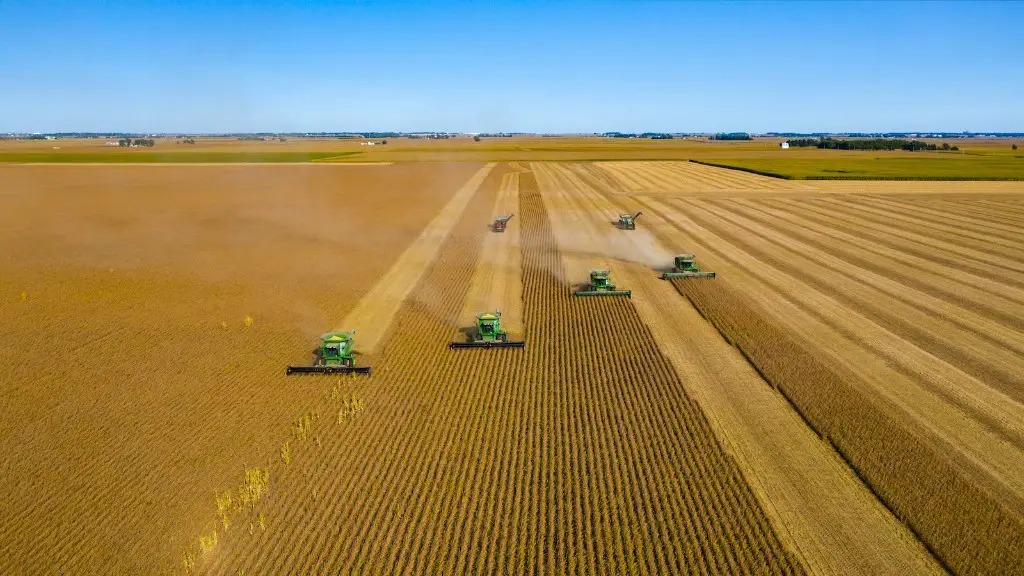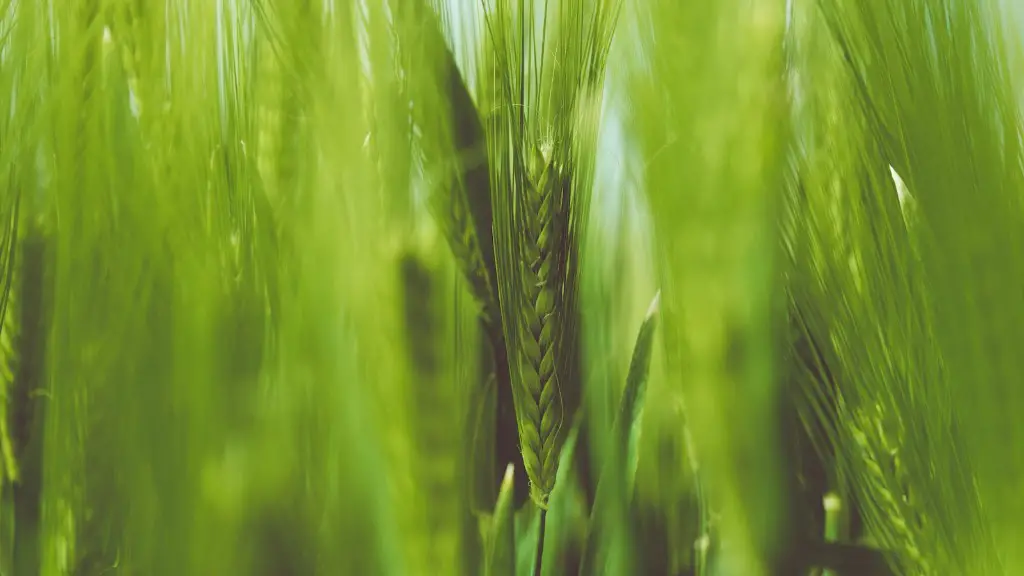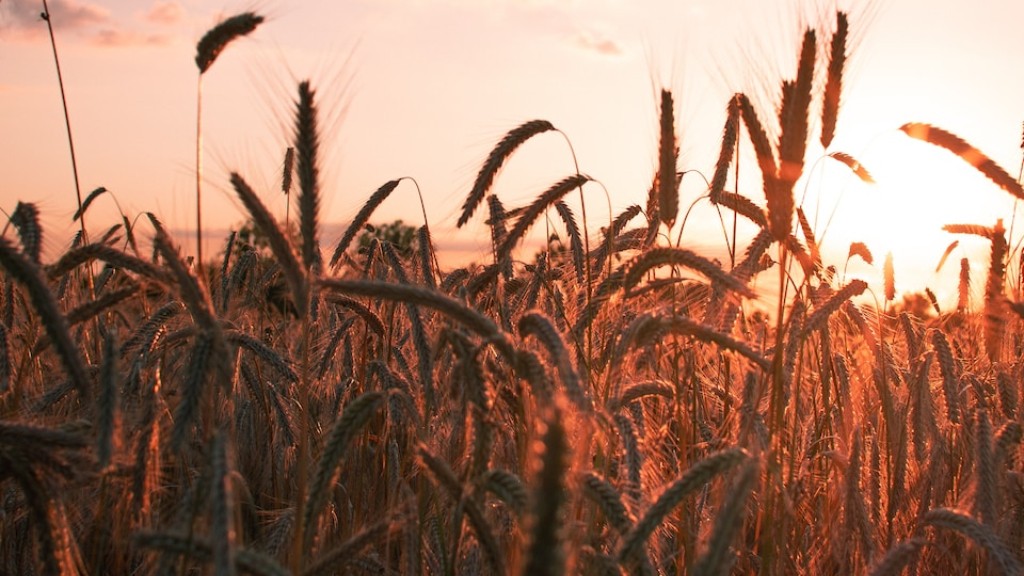Agriculture has been an essential part of human life since our earliest days, and the link between it and population growth is undeniable. The development of agricultural practices and technologies has allowed for the efficient and varied production of food, which has enabled large populations to thrive and cities to be built. The production of food has also allowed societies to develop new tools and methods of production that enable citizens to have a better standard of living. At its peak, the ability of food production to stimulate population growth was unmatched. The advances in agriculture over the centuries have also played a major role in the expansion of human civilizations and the growth of populations.
How Agriculture Boosts Population Size
The most obvious way that agriculture impacts population growth is through increased food availability. As a result of increasing food production and technological advancements, the food supply has become more reliable, diverse and affordable for large parts of the world. This increased food supply has provided more people with access to quality nutrition, which has helped to combat malnutrition, a major factor in population growth. At the same time, decreases in infant mortality and enhanced health care facilities have allowed populations to increase due to decreased death rates.
In addition to increased food availability, the advances in agricultural technology have allowed farmers to produce more food. This has resulted in increased crop yields, enabling farmers to feed larger populations with the same resources. Increased water availability and improved irrigation techniques have also enhanced agricultural production, allowing farmers to produce more food with less water. Improved cultivation techniques and the widespread adoption of modern farming practices have helped create an environment that is conducive to population growth and expansion.
Agriculture has also been a major driver of economic development. Through increased productivity and improved access to markets, rural farmers have been able to gain access to more income and resources, which has enabled them to improve their quality of life and also invest in their communities. This, in turn, has contributed to economic growth, which has helped to drive population growth in some of the most rural and undeveloped regions.
Moreover, the development of agricultural technology has led to the decline of manual labor in the farming sector. Automated systems have made farming more efficient, resulting in lower labor costs and increased productivity. This has allowed for the diversification of the agricultural sector, creating employments opportunities for rural areas. These employment opportunities have allowed for increased wages and better living standards, which has enabled rural areas to become more desirable places to live, leading to an increase in the population.
The Role of Industrialization in Population Growth
Agriculture has also contributed to population growth indirectly through the growth of industry. Industrialization has allowed for the production of more efficient and advanced technology for agricultural purposes, which has allowed for a higher level of production. Furthermore, industrialization has also provided an economic impetus for investment in agriculture and food production, leading to an increase in farm sizes and output. This, in turn, has enabled larger populations to be sustained, which has led to significant population growth.
Industrialization has also helped to grow the food production industry, allowing businesses to develop, process and distribute food products. These advances in technology and efficiency have enabled populations to have access to a greater variety of food, helping to increase food security, as well as increased access to nutrition. Moreover, industrialization has allowed for the development of transportation solutions, allowing food to be transported to a wider range of areas, thus supporting larger populations.
The link between industry and population growth is twofold. First, the advances in industrial technology and efficiency have allowed for a higher level of production, leading to greater access to food. Secondly, increased economic activity due to industrialization has enabled more investment in agricultural projects, leading to more jobs in rural areas, resulting in more people migrating from rural to urban areas in search of job opportunities, thus stimulating population growth.
Furthermore, industrialization has helped to create a division of labor, where certain tasks are delegated to specialized personnel, leading to increased productivity. This has allowed for the more efficient allocation of resources in farming, leading to an increase in output per worker. This higher level of productivity has enabled larger populations to be sustained, further impacting population growth.
The Impact of Technology on Population Growth
Technology has been a significant contributor to the growth in population, allowing increases in productivity while reducing the need for manual labor. This has allowed farmers to produce higher yields in a shorter amount of time, allowing for an increase in food production, as well as improved access to food. Furthermore, advances in technology have also enabled food to be distributed to wider areas, helping to support larger populations.
Technology has also enabled the development of efficient and cost-effective irrigation systems, which has allowed for increased water availability for agricultural purposes. This has enabled farmers to produce more food with the same amount of water. Additionally, advances in storage and preservation technology have allowed food to be stored for longer, reducing wastage and allowing for greater security of food supplies.
Technology has also enabled the development of new farming techniques and methods, such as green farming, enabling farmers to use fewer resources while still maintaining production. Similarly, advances in biotechnology have allowed for the development of genetically modified organisms that help improve food production yields and reduce crop loss. All of these technologies demand fewer resources and more efficient yields, enabling populations to be supported for longer.
The Role of Government in Population Growth
Finally, government policies and interventions are essential in ensuring agricultural production and supporting population growth. Government initiatives, such as subsidies and investments in agricultural infrastructure, play a crucial role in incentivizing the development of agricultural technology and practices, as well as the implementation of efficient systems of water usage and supply. Government programs that focus on education and the advancement of agriculture, such as the introduction of agrarian reform, have also helped to reduce inequality, making it easier for people to access food and opportunity.
In addition, government initiatives designed to improve nutrition and health care have also played a key role in population growth. Governments have implemented reforms that have allowed for improved access to health care and the introduction of nutrition-rich diets. This has enabled populations to stay healthy and lead longer lives, thus increasing the population size.
At the same time, government regulations on labor and land ownership have also played a significant role in influencing population growth. Governments have implemented policies that have allowed for the protection of labor rights and ensured that farmers have access to land resources, thus increasing agricultural productivity and reducing poverty in rural areas.
The Impact of Migration on Population Growth
Migration has been a major reason for population growth in certain areas of the world, as increasing numbers of people move towards places where food availability is higher and more secure. Migration has allowed for the availability of a greater variety of resources, as well as greater access to jobs and education, leading to economic growth and population expansion.
Moreover, migration has also opened up opportunities to access food resources in other regions. This has allowed individuals to access different varieties of food, which has improved nutrition levels in migration-prone areas. Furthermore, migration has enabled individuals to carry out production and labor activities in new locations, leading to increased agricultural output and improved access to food and resources.
Migration has also had a considerable effect on population growth due to factors such as the reduction of conflict and the spread of ideas and cultural practices. The movement of people has allowed for the exchange of knowledge and cultural practices, impacting population growth and promoting the development of new technologies and attitudes.
Finally, migrations also have an indirect effect on population growth. Migration has enabled economic opportunities and access to resources, leading to increased investment in technology and agricultural practices. This has increased the availability of food, leading to improved nutrition levels and ultimately resulting in population growth.




